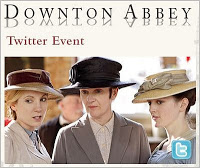Digital Inclusion: It’s Not All or Nothing [repost]
Kreher, Y. W. (2015, November 3). Inclusive design: It’s not all or nothing. [Guest blog post] Retrievable from http://www.digitalwritingmonth.com/2015/11/03/digital-inclusion-its-not-all-or-nothing/]
Do we have to talk about accessibility? (Again?)
(Since we are talking about digital creations, I’d much rather use the less frequently hyped phrase “Digital Inclusion.”)
Text Equivalent (Opens up a Google Document)
To be honest, the first time around I was intimidated by these responses. I wanted to be the cool kid in high school. Not the unpopular accessibility police officer. But what is the point of learning if I don’t share it? It being knowledge that will impact the lives of some 1 billion people in the world (the world’s largest minority)?
Writing a blog post on accessible design of digital media doesn’t make me a better person than you, the reader, on this topic. I prefer to see everyone as being in a potential zone of change. Some may be teetering on the edge of transformative learning whilst others are making strides to improve the accessibility of digital content creation. It is worth emphasizing that accessibility has to begin with us, the digital content creators. Ideally, we cannot and should not wait for web developers or the Office of Disability to fix any problems that arise from the digital content we create.
Accessibility is not an US versus THEM matter. “WE” co-create content together on the open web with all kinds of people; we build on and enlarge our learning experiences together. We can innovate by consulting with accessibility specialists and listening to each other’s views. If we are unsure as to why or how to make any digital content usable by everyone, I suggest we consider a few things as we participate in #DigiWriMo this month:
1. Rethink how we view accessibility.
Disability is a porous state; anyone can enter or leave at any time. Live long enough and you will almost certainly enter it. – Cecilia Capuzzi Simon
We frequently associate accessibility with disabled people, the “other” ones and forget how disability can happen to anyone of us, anytime. Indeed, consider the porosity of this concept and how ability is, maybe, a social construction?
Accessibility is also about inclusion that enriches all of us. I like how Steven Taylor put it when he talked about making accommodations beyond compliance in the context of higher education:
My starting point on the issue of accommodations for students with disabilities is the philosophy that we do this not for the students with disabilities, not for compliance, and not for diversity for the sake of diversity, but because universities are enriched by the experiences of students with disabilities.
We are ALL richer for the effort we put in to make informative content findable, available, usable, shareable, efficient and collaborative as much as possible on the open web. Doing so, we invite everyone to participate in our conversations and connect with us for deeper learning. Accessibility, someone said, is about the heart, not the law. Lennard Davis reminds us that the Americans with Disabilities Act has opened some doors but discrimination against people with disabilities still exist: economic discrimination, marriage inequality, and “discrimination in more powerful but hard to regulate ways – the job interview, dating websites, social engagements, and the like.”
2. We can learn how to create accessible digital content.
Learning how to make digital content begins with what I would call an awakening to the needs of others around us. This thoughtfulness benefits not just the person with a disability, but also content creators, who then have opportunities to pause and be reflective in their design; to go about acquiring new knowledge and skills on how to include others in their digital craft-making. The web is not short of resources on how to create accessible digital content. I will list a few helpful sites that describe how we can get there, by listening, and by working at our own pace:
- In June 2015, a group of disability studies scholar disseminated a list of guidelines to potential publishers on how to create accessible e-books.
The template of guidelines is embedded in the article and can also be found as a viewable article on my Google drive. Benetech, a nonprofit organization with a focus on developing technology for social good, also has a webpage that describes the accessible e-book publishing criteria.
[https://twitter.com/insidehighered/status/610834239664173057]
- A toolkit on Improving the Accessibility of Social Media by DigitalGov. The kit includes general accessibility tips, platform-specific tips, and additional resources.
I will highlight a few of the 9 tips pertaining to Twitter that DigitalGov has published because I find that I have a lot to learn to make my tweets more shareable with people on the web. A number of #DigiWriMo participants are also connecting via Twitter. Moreover, I will be creating a #DigiWriMo Make prompt with these tips!
- If you are posting an image, video or audio file, use these words, e.g. [PIC], [VIDEO], [AUDIO] to indicate that you are linking to any of these file formats. This prepares people using screen readers to know what to expect before clicking on the link. Uppercase letters are recommended to improve clarity for those with visual challenges.
- Compose your tweet in such a way that it acts as a descriptive caption and provides context for the picture/video/audio file. Then link back to a webpage that hosts a tagged photo [image with alttext], video or audio with full caption.
I have an example of this on my #VCUTHINK course. I have a mind map which I posted as an image, which will be unreadable to screen readers. Thus, I created another representation of the digital content. I created a text equivalent using a Google document which I posted, shared and linked to the course page. I didn’t post a tweet about this though. I have a lot of learning to do! - Use Camel Case for the first letters of compound words used in Twitter hashtags. For example, #DigiWriMo instead of #digiwrimo. [Yikes, slap me for my earlier ignorance with my tweets. #ICanBeWrong]
- Try to link to accessible digital content (a tagged photo; audio or video with transcript). If that is not possible, or you are unsure, include a brief description of these limitations in your tweet(s). [This is a new one for me to learn!]
3. Inclusive design is not all or nothing.
Ronald Mace first introduced the concept of universal design (UD) as “the design of products and environments to be usable by all people, to the greatest extent possible, without the need for adaptation or specialized design” (1988). My interpretation of UD is that it is about degrees of possibility.
Inclusive design, a related term used more broadly in the UK, incorporates the idea of reasonable-ness.
“The design of mainstream products and/or services that are accessible to, and usable by, as many people as reasonably possible on a global basis, in a wide variety of situations and to the greatest extent possible without the need for special adaptation or specialised design”.
Once our senses are awakened to the needs (not wants) of people around us, can our brains lose that empathic understanding? Some research has shown that even toddlers can be primed for empathy. Apparently, empathy can be nurtured throughout life. Yet, the busyness and distractions of life can hinder our desire to be attentive — not unempathic — to inclusion as we create digital content. I want to encourage you to keep on with this practice of digital inclusion and stop beating yourself down that you can’t find the time to do it. We can learn how to create digitally inclusive design, and we can start at some point to make digital inclusion as reasonably possible as we can. Develop an ambitious imagination. But more so, remember, it’s about the heart. Where the heart is, we will find the means and resources.
An Activity: Make Writing … Digital
#DigiWriMo Make:
- If digital inclusion or accessibility were a song, movie, image, book or a short poem, what would it look/sound like to you? Make a short note, tune, video clip or hum a tune using any online app, e.g. Notegraphy, Vocaroo, PicMonkey, etc.
- Before you share your image/audio/video file on Twitter, create a text equivalent of this note on a web document. (Apply Tip B)
- Share your digital content on Twitter using the #DigiWriMo hashtag and the #A11y (short for accessibility) hashtag. Remember Camel Case? This way, we show our support to the community or network that’s working towards creating accessible web content. (Apply Tips B and C and/or D)
We hope you will share your work across the various Digital Writing Month spaces that you inhabit. That could be right here at the Digital Writing Month blog; at your own blog or writing space; on Twitter with the #DigiWriMo hashtag; in the DigiWriMo Google Plus Community; at the DigiWriMo Facebook page; or wherever you find yourself writing digitally.




